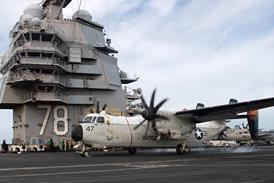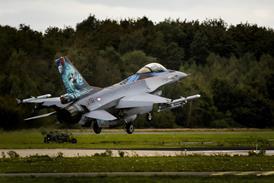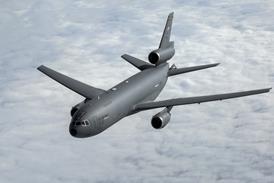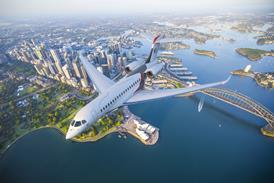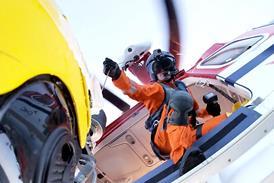ILA2008 is honouring the greatest airborne humanitarian mission of all time – the Berlin Airlift that happened 60 years ago in a very different Berlin. Few events in German history are of such powerful symbolism – an unique happening in terms of international politics and aviation. GEOFF THOMAS reports on why this astonishing feat of aviation and logistics remains the largest humanitarian air transport operation of all time.
For 328 days between June 1948 and May 1949, a major European city was supplied entirely by air, including food, clothing and fuel. That city was Berlin, and what became known as the Berlin Airlift kept a substantial population from certain starvation…if many hadn’t frozen to death first.
At the end of the Second World War, Berlin had quickly become the front line in what is now referred to as the Cold War. The city – isolated in the eastern part of Germany controlled by the Russians - had already been split into four zones with the Allies (the UK, the US and France) sharing the western part and facing the Russians, who held on to the east.

After many months of increasing tension and arguments between the Allies and the Russians, Soviet leader Stalin chose the early hours of June 24, 1948 to halt all road, rail and water traffic through the access corridor between the west and the sectors of Berlin controlled by the Allies. As this was the only means by which these people could be supplied, Stalin expected that the ploy would work and that the Allies would bend to his demands.
But as the coming days and months proved, the UK and US were made of sterner stuff, and having called Stalin’s bluff, the temperature of the Cold War decreased by a further few degrees. Indeed, ‘Operation Vittles’, as the Berlin Airlift was officially called, proved that a large population could be supplied entirely by air and showed the Soviets the West wasn’t going to be a pushover.
When the Americans asked the British about a possible joint airlift, they discovered that the Royal Air Force had already been running a relatively small airlift – nicknamed ‘Little Lift’ - in support of the troops in its sector of Berlin.
It had then been calculated that the daily resources needed (including 1,700 calories per person) to support the entire city each day would be: 646 tonnes of flour and wheat; 125 tonnes of cereals; 64 tonnes of fat; 109 tonnes of meat and fish; 180 tonnes of dried potatoes; 180 tonnes of sugar; 11 tonnes of coffee; 19 tonnes of powdered milk; 5 tonnes of milk; 3 tonnes of fresh yeast for baking; 144 tonnes of dried vegetables; 38 tonnes of salt; and 10 tonnes of cheese.
So, in total, more than 1,500 tonnes would be needed daily to keep the population of more than two million people alive. In addition, the city would need another 3,500 tonnes of coal and oil for heating and power generation as electricity and fuel supplies had also been cut by the Soviets.
One immediate problem was the lack of suitable runways in Berlin - two at Tempelhof in the US’s sector and one at Gatow, run by the British. Neither was intended to support the loads being put through them by the many Douglas C-54s and C-47s, Avro Yorks and Handley Page Hastings transport aircraft, while the runways also needed constant work to support and strengthen the pierced steel planking from which they were built.
Although not involved initially, the French decided to build a new airport in its sector, alongside Lake Tegel, and this was constructed – largely by female labourers - in fewer than 90 days. After the crisis, this French initiative became Berlin-Tegel International Airport.
Other supplies were brought in by RAF short Sunderland flying boats, landing on lakes within the British sector. The Sunderlands had been used to hunt German U-boats, but their salt-proofed aluminium hulls made them the only aircraft capable of bringing in vital supplies of salt.
A lack of manpower in the city was overcome by Berliners themselves. Crews unloading and making repairs at the Berlin airports were replaced almost entirely by locals, who were given additional rations in return. As the crews improved, the times for unloading continued to fall, with a record being set by unloading an entire 10-tonne load of coal from a C-54 in 10 minutes. This was later beaten when a twelve-man crew unloaded the same load in 5min and 45sec.
After a difficult start to the airlift, when one particular day became known as ‘Black Friday’, things improved throughout the late summer, autumn and winter of 1948.
By the end of July, after only one month, the Airlift was succeeding; daily operations flew more than1,500 flights a day and delivered around 4,500 tonnes of cargo, enough to keep the city supplied. All of the C-47s were withdrawn by the end of September 1948, and 225 larger C-54s were deployed to the lift. Supplies soon improved to 5,000 tonnes a day.
On New Year’s Eve 1948, the 100,000th airlift mission was flown, by which time nearly 750,000 tonnes of supplies had been flown into Berlin.
The continued success of the airlift humiliated the Soviets, and towards the end of April 1945 the Russian news agency TASS reported a willingness to lift the blockade. Soon, the four powers began serious negotiations and a settlement was reached on Allied terms.
The Soviet blockade Berlin was lifted at one minute after midnight on May 12, 1949. A British convoy immediately drove through to Berlin, and the first train from the West reached the city at 5.32am. Later that day, an enormous crowd celebrated the end of the blockade.
Flights continued for some time, though, to build a comfortable surplus. By the end of July 1949, a three-month surplus was created, ensuring that the airlift could be re-started if required.
The Berlin Airlift officially ended on September 30, after 15 months. In total, the USA delivered 1,783,573 tonnes, while 541,937 tonnes were delivered by the RAF, totalling 2,326,406 tonnes of food and supplies on 278,228 flights to Berlin. The Allied transport aircraft together flew more than 92 million miles in the process, nearly as far as the sun is from the earth!
A total of 101 aircrew were killed as a result of the operation, including 39 British and 31 Americans, mostly due to crashes. Some 17 American and eight British aircraft crashed during the operation – but the population of West Berlin had been saved.
Today you can visit a memorial to those who gave their lives in the airlift. It’s across the road from Tempelhof airport, where so many of the aircraft landed. Also at Tempelhof is a preserved example of one of the C-54 freighters from the airlift – known locally as Rosinenbombers or ‘candy bombers’, as the American crews used to throw dried fruit and chocolate from the doors to hungry Berlin children as the aircraft landed.
Visit the official Berlin Air Show site
Flight's ACAS Business Aviation
Flight's products including the Business Aircraft Pocket Guide
All the show news, pictures, blogs, and video.
All the news from ILA 2008
Source: Flight Daily News




